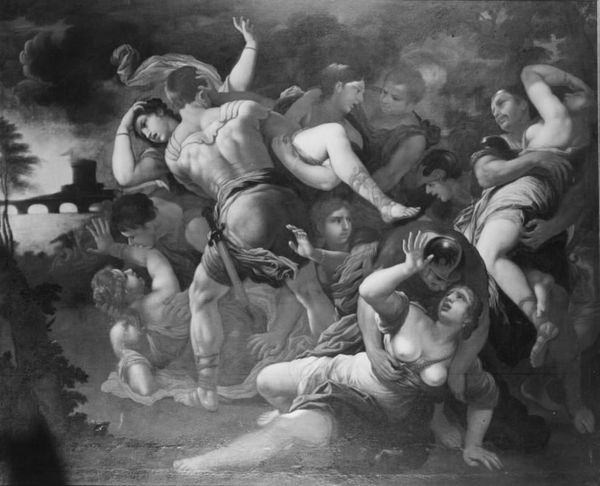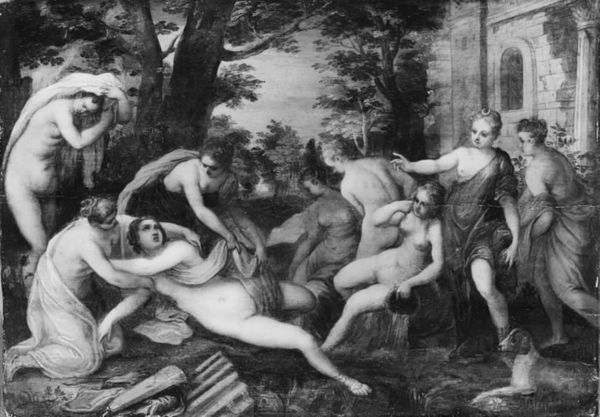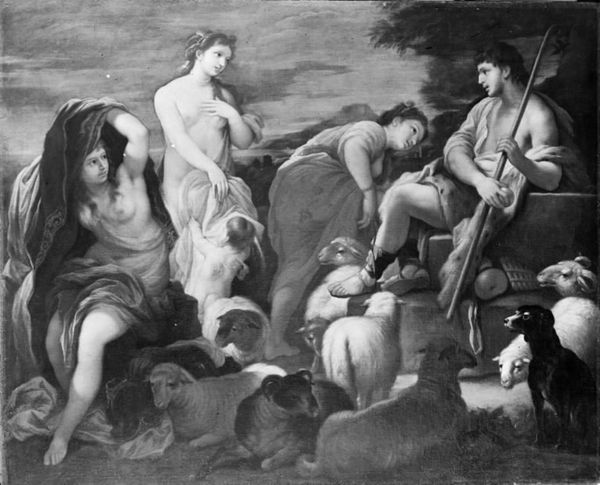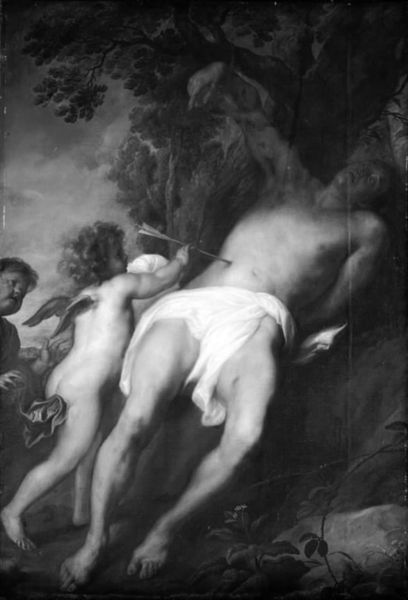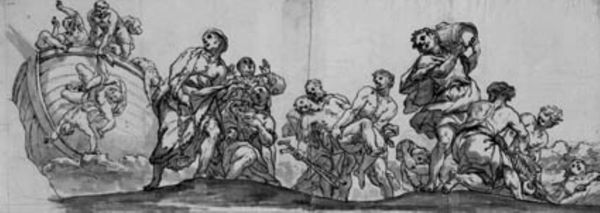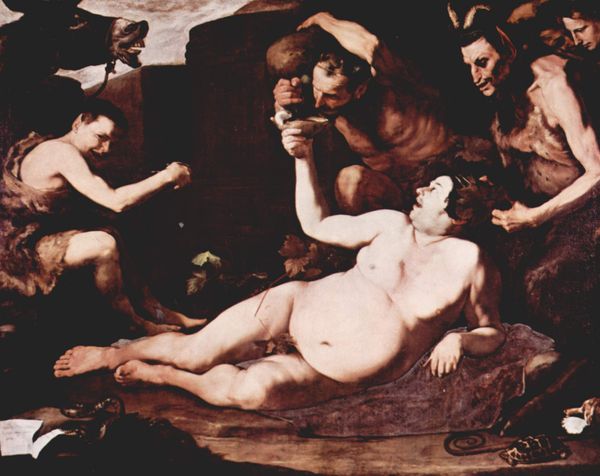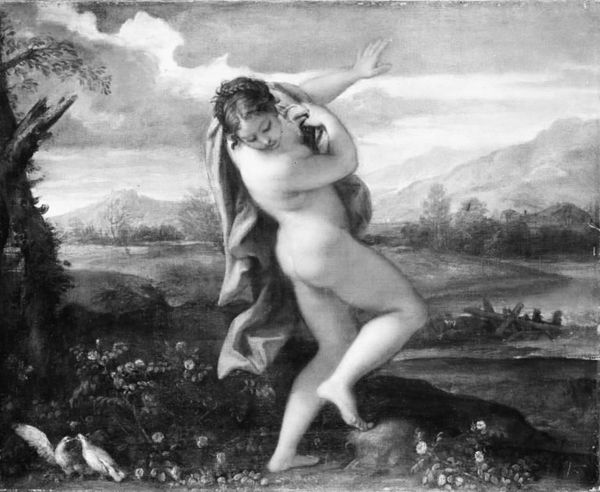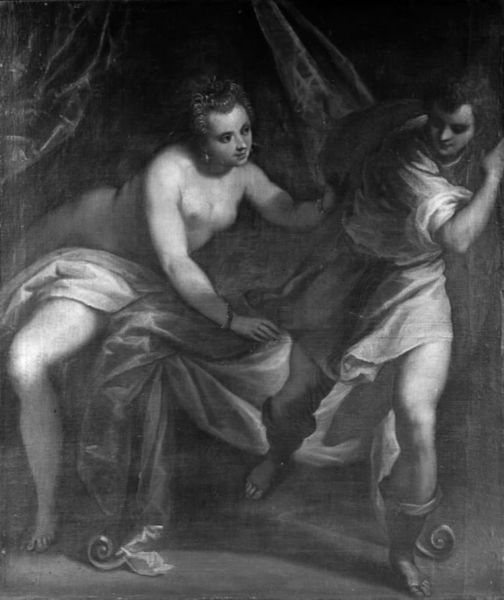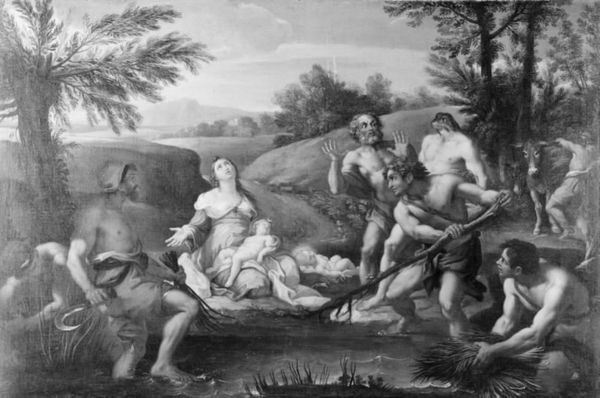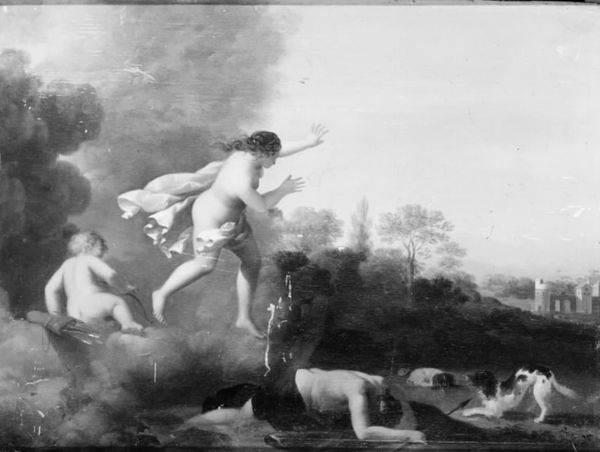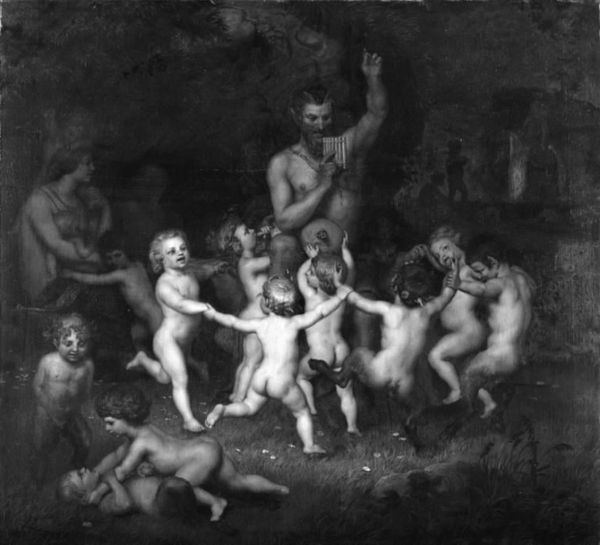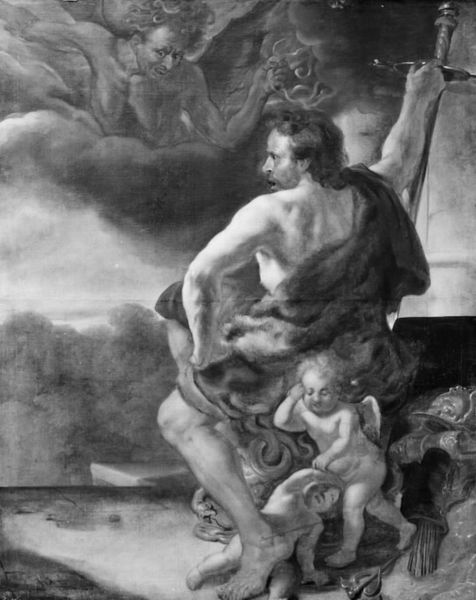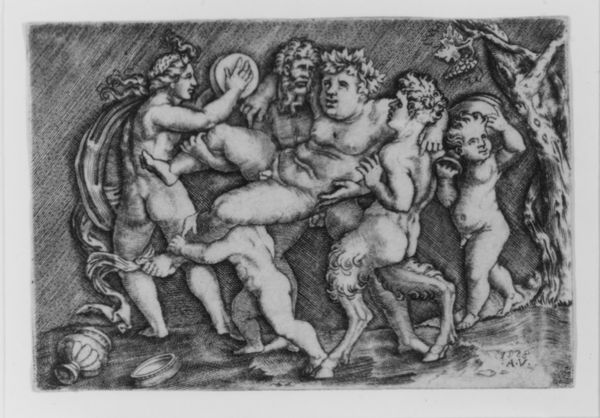
painting, oil-paint, canvas
#
allegory
#
baroque
#
painting
#
oil-paint
#
figuration
#
canvas
#
black and white
#
monochrome photography
#
genre-painting
#
history-painting
#
academic-art
#
monochrome
#
italian-renaissance
#
nude
#
monochrome
Dimensions: 46.5 cm (height) x 144.5 cm (width) (Netto)
Curator: Giacinto Gimignani painted this canvas titled, "Bacchus and Ariadne" sometime between 1626 and 1681. The piece is currently located here at the SMK, the National Gallery of Denmark. Editor: The eye travels! There's this hazy yet boisterous atmosphere to the canvas—very Baroque. So much movement and fleshy abandon, as expected, in a monochrome rendering. Curator: Indeed. As we know, Gimignani was quite invested in the artistic traditions of his era. His biography notes extensive travels, training in the workshops of masters. "Bacchus and Ariadne" reflects this well. Look at how this composition is carefully arranged and classical in style. This tells us so much about its institutional function as an elite art object. Editor: Elite art object indeed, that's clear! Although a reproduction, this photograph strips the artwork of color, bringing forward its value instead. Here we can concentrate on line, on material representation and process as such. Gimignani obviously understood how to capture volume with light and shadow, with the limited materials available to us in monochromatic imagery. I wonder what pigments would’ve cost back then? Curator: The narrative and subject matter play into this "elite art object" classification. It tells the familiar mythological story. Abandoned by Theseus, Ariadne is discovered by the god Bacchus. It showcases how artists deployed these stories to explore themes around fate, love, and transformation within the larger social structure and courtly politics. Editor: Exactly, it’s labor and material production reinforcing power—a complex choreography on canvas to maintain ideological hegemony, while also hopefully producing something captivating in its own right. Think about the process, applying each layer of paint in its production to build this grand scene… each choice, each material having some purpose. Curator: It’s intriguing how the mythology becomes almost incidental in a modern museum setting. Consider this from a contemporary context; these artworks take on renewed roles in how culture and taste are manufactured in the present, don't you agree? Editor: Yes! Art always reveals both intention and unanticipated meaning, depending on time and space, viewer, access… This particular snapshot of production really shows it off! Curator: A perfect case study then! Editor: Couldn't agree more.
Comments
No comments
Be the first to comment and join the conversation on the ultimate creative platform.

